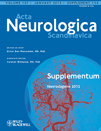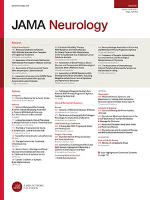
Current Alzheimer Research
Scope & Guideline
Fostering Insights to Combat Alzheimer's Disease
Introduction
Aims and Scopes
- Neurobiology of Alzheimer's Disease:
The journal emphasizes research on the underlying neurobiological mechanisms of Alzheimer's disease, including the roles of amyloid-beta, tau proteins, and neuroinflammation. - Innovative Therapeutic Strategies:
There is a consistent focus on exploring new treatment modalities, including small molecules, biologics, and natural products aimed at modifying disease progression or alleviating symptoms. - Diagnostic Biomarkers and Tools:
Current Alzheimer Research publishes studies on the identification and validation of biomarkers, both blood-based and imaging, to facilitate early diagnosis and monitor disease progression. - Multimodal Approaches to Research:
The journal encourages the use of diverse methodologies, including computational modeling, machine learning, and neuroimaging techniques, to address complex questions in Alzheimer's research. - Clinical and Epidemiological Studies:
Research articles often cover epidemiological data, clinical trials, and observational studies that provide insights into risk factors, disease trajectory, and the impact of comorbidities on Alzheimer's disease.
Trending and Emerging
- Machine Learning and Artificial Intelligence Applications:
Recent publications highlight the integration of machine learning and AI in diagnosing Alzheimer's disease, predicting disease progression, and analyzing complex datasets, showcasing a trend towards computational approaches. - Gut-Brain Axis Research:
There is an increasing focus on the relationship between gut microbiota and Alzheimer's disease, exploring how gut health may influence neurodegenerative processes and cognitive function. - Neuroinflammation and Immunological Studies:
Research on neuroinflammation and the immune system's role in Alzheimer's disease is emerging, with studies investigating how inflammatory processes contribute to disease pathology. - Lifestyle and Non-Pharmacological Interventions:
There is a notable rise in studies examining the effects of lifestyle changes, such as diet, exercise, and cognitive training, on cognitive health and Alzheimer’s disease prevention. - Biomarkers and Personalized Medicine:
Emerging themes include the development of personalized medicine approaches based on biomarker profiles, aiming to tailor interventions to individual patient needs and improve treatment outcomes.
Declining or Waning
- Traditional Pharmacological Approaches:
Research focused solely on traditional pharmacological treatments, such as cholinesterase inhibitors, seems to be declining as the field shifts toward exploring combination therapies and novel drug classes. - Single-Factor Risk Assessments:
There is a noticeable decrease in studies that investigate single risk factors for Alzheimer's disease, as the trend is moving towards understanding the complex interplay of multiple factors, including genetic, environmental, and lifestyle influences. - Basic Science Studies Without Clinical Relevance:
The journal has seen fewer publications focused solely on basic science without direct clinical implications, as there is a growing demand for translational research that bridges laboratory findings with clinical applications.
Similar Journals

METABOLIC BRAIN DISEASE
Advancing insights into cerebral metabolism.METABOLIC BRAIN DISEASE, published by SPRINGER/PLENUM PUBLISHERS, is a leading journal dedicated to advancing our understanding of the metabolic processes impacting brain health and disease. Established in 1986 and set to continue until 2024, this journal encompasses a wide range of interdisciplinary research that intersects the fields of Biochemistry, Cellular and Molecular Neuroscience, and Neurology, as evidenced by its notable quartile placements in Q2 and Q3 for 2023. With an ISSN of 0885-7490 and an E-ISSN of 1573-7365, it serves as a vital resource for researchers and practitioners aiming to deepen their insights into cerebral metabolic disorders and their implications. Although currently not an Open Access option, its rigorous peer-review process ensures that high-quality, impactful research reaches its audience. Showcasing a significant rank within the top percentile of its categories, METABOLIC BRAIN DISEASE is instrumental in shaping the future of neurological research and clinical applications.

Aging and Disease
Fostering collaboration for a healthier aging population.Aging and Disease is a leading open-access journal published by the International Society on Aging and Disease, dedicated to advancing the understanding of aging and its associated diseases. Since its inception in 2010, the journal has established itself as a vital resource for researchers and practitioners in the fields of Geriatrics, Neurology, Cell Biology, and Pathology. With an impressive Q1 ranking across multiple categories and a robust position in Scopus rankings, including ranks in the top 3% in Geriatrics and Gerontology, it showcases high-quality research that addresses the complexities of aging processes. Each issue presents original articles, reviews, and insights aimed at improving health outcomes for the aging population. The open-access model ensures that valuable research findings are readily available to a global audience, fostering collaboration and innovation. As a go-to publication for scholars, healthcare professionals, and students, Aging and Disease significantly contributes to the multidisciplinary dialogue surrounding aging and its health implications.

NEUROBIOLOGY OF DISEASE
Bridging Science and Therapeutics in NeurologyNEUROBIOLOGY OF DISEASE is a premier journal dedicated to advancing the understanding of neurological disorders and the underlying biological processes, published by Academic Press Inc, Elsevier Science. With an impressive impact factor indicative of its significance—ranked in the Q1 quartile in Neurology for 2023 and occupying the 14th rank out of 192 journals in the field of Neuroscience and Neurology—this journal serves as a critical resource for researchers, clinicians, and students alike. The journal has a rich history since its inception in 1994, continuously evolving its scope to encompass groundbreaking research and insights into neurobiological mechanisms and disease pathology. Though it currently does not provide Open Access options, NEUROBIOLOGY OF DISEASE remains a vital vessel for disseminating knowledge that significantly contributes to the field of neurology, fostering an understanding that can lead to innovative therapeutic strategies.

Alzheimers & Dementia
Empowering researchers to tackle Alzheimer’s challenges.Alzheimers & Dementia is a premier journal published by WILEY that focuses on the latest advancements in understanding, diagnosing, and treating Alzheimer's disease and other dementias. With an ISSN of 1552-5260 and an E-ISSN of 1552-5279, this influential journal boasts a commendable impact factor and ranks in the Q1 category across several disciplines, including *Cellular and Molecular Neuroscience*, *Geriatrics and Gerontology*, and *Neurology (Clinical)*. By publishing cutting-edge research, systematic reviews, and innovative clinical trials, Alzheimers & Dementia aims to bridge the gap between basic neuroscience and clinical practice, offering valuable insights into the etiology, epidemiology, and management of dementia-related disorders. The journal is hosted in the United States and operates under a balanced access model, providing essential resources for researchers, healthcare professionals, and students dedicated to tackling the challenges posed by these neurodegenerative diseases. Available online, it plays a pivotal role in shaping current and future research directions in the vibrant field of dementia studies.

Current Neuropharmacology
Leading the way in neuroscience and therapeutic advancements.Current Neuropharmacology is a premier journal dedicated to advancing the field of neuropharmacology, published by Bentham Science Publishers Ltd in the United Arab Emirates. As a leader in its domain, this journal has achieved a remarkable position in 2023, with Q1 rankings across several categories including Medicine (miscellaneous), Neurology, and Pharmacology. With a robust focus on the latest research related to pharmacological treatments and their neurological implications, Current Neuropharmacology features cutting-edge studies that inform clinical practices and psychiatric care. Although not open access, the journal offers both print and electronic formats to cater to a diverse audience of researchers, healthcare professionals, and students keen on accessing vital information in neuropharmacology. Its high impact within the academia is underscored by impressive Scopus rankings, confirming its importance as a vital resource for the ongoing exploration of mental health and neurotherapeutic innovations. With an engaging scope that encompasses emerging discoveries and clinical advancements, Current Neuropharmacology continues to be an essential platform for scholarly communication in the evolving landscape of neuroscience and pharmacology.

ACTA NEUROLOGICA SCANDINAVICA
Innovating Understanding of Neurological DisordersACTA NEUROLOGICA SCANDINAVICA is a prestigious journal published by Wiley that has significantly contributed to the field of neurology and neuroscience since its inception in 1961. With a broad scope encompassing clinical and experimental research, this journal is esteemed for its rigorous peer-review process and high-quality publications. Located in the United Kingdom, it is recognized in the 2023 category quartiles as Q1 in Medicine (miscellaneous) and Q2 in both Neurology and Clinical Neurology, indicating its strong influence and relevance within the medical community. With an H-index demonstrating consistent citation impact, ACTA NEUROLOGICA SCANDINAVICA holds a Scopus rank of #86 out of 400 in Clinical Neurology, reflecting its contribution to advancing current knowledge and practice. Researchers, professionals, and students alike will find in this journal a valuable resource for the latest findings, discussions, and developments in understanding neurological disorders and treatments, furthering educational and clinical endeavors alike.

Aging-US
Exploring the Frontiers of Aging and Cell BiologyAging-US is a premier peer-reviewed journal dedicated to advancing the field of aging research and cell biology. Published by IMPACT JOURNALS LLC, this journal serves as a vital resource for researchers and professionals exploring the biological mechanisms of aging and their implications for health and disease. With a commendable impact factor reflected in its 2023 Scopus rankings, where it stands at Rank #10/38 in the category of Aging and Rank #63/285 in Cell Biology, Aging-US exemplifies rigorous scientific excellence. Its open access policy enhances accessibility, fostering a wider dissemination of knowledge in both academic and clinical settings. Spanning from 2009 to 2024, the journal provides a platform for groundbreaking studies and innovative methodologies, ensuring that it remains at the forefront of the dynamic conversations surrounding aging and cellular biology. Engage with Aging-US to contribute to the evolving narratives of longevity and cellular health.

JAMA Neurology
Pioneering Research in the Realm of NeurologyJAMA Neurology is a leading peer-reviewed journal published by the American Medical Association, focused on advancing the understanding and treatment of neurological disorders. With an impressive impact factor and ranked in the 99th percentile among clinical neurology journals, this publication is recognized as Q1 in its category for 2023, highlighting its significance in the field. Since its inception, the journal has provided a platform for high-quality research, clinical trials, and reviews that inform both clinicians and researchers. Operating from its headquarters in Chicago, Illinois, JAMA Neurology offers rich insights into the latest advancements in neurology, featuring articles that span a wide range of topics including neurodegenerative diseases, stroke, epilepsy, and neurocritical care. Researchers and professionals are encouraged to access the journal’s content freely, as it employs open access options to promote the dissemination of critical knowledge. As a critical resource in the field of neurology, JAMA Neurology is essential for anyone involved in this dynamic and rapidly evolving specialty.

NEUROLOGICAL SCIENCES
Fostering collaboration to transform neurological research.NEUROLOGICAL SCIENCES, published by SPRINGER-VERLAG ITALIA SRL, is a premier journal that has been a cornerstone in the field of neurology and related disciplines since its inception in 1996. With an impressive Q1 ranking in Dermatology and Q2 rankings in Neuroloy (clinical) as well as Psychiatry and Mental Health, this journal consistently delivers high-quality peer-reviewed research that informs and shapes clinical practice. The journal boasts a significant presence on Scopus, positioned in the 89th percentile for Dermatology, 73rd for Psychiatry and Mental Health, and 72nd for Neurology (clinical), reflecting its influential contributions to medical knowledge. Open Access options are available, ensuring that this valuable research is accessible to a wider audience committed to advancing their understanding of neurological sciences. As it converges into future years (2024 and beyond), NEUROLOGICAL SCIENCES aims to continue foster collaboration and innovation amongst researchers, professionals, and students within the neurology and mental health domains, making it an indispensable resource for those dedicated to improving patient outcomes and advancing scholarly dialogue.

AIMS Neuroscience
Connecting researchers to the pulse of neuroscience advancements.AIMS Neuroscience is an esteemed open-access journal published by the American Institute of Mathematical Sciences (AIMS), dedicated to advancing the field of neuroscience since its inception in 2014. With a robust ISSN of 2373-8006 and an E-ISSN of 2373-7972, this journal aims to provide a platform for innovative research and scholarly discourse that spans the diverse and dynamic landscape of the neuroscience discipline. As of 2023, it holds a respectable Q3 category ranking in the miscellaneous neuroscience field and ranks #65 out of 113 in general neuroscience according to Scopus, positioning it in the 42nd percentile for impact. AIMS Neuroscience encompasses a broad scope of topics, from neurobiology and cognitive neuroscience to computational models and neuroengineering, making it a vital resource for researchers, professionals, and students alike. The journal's commitment to open access ensures that cutting-edge research is freely available, fostering collaboration and knowledge sharing within the global neuroscience community.